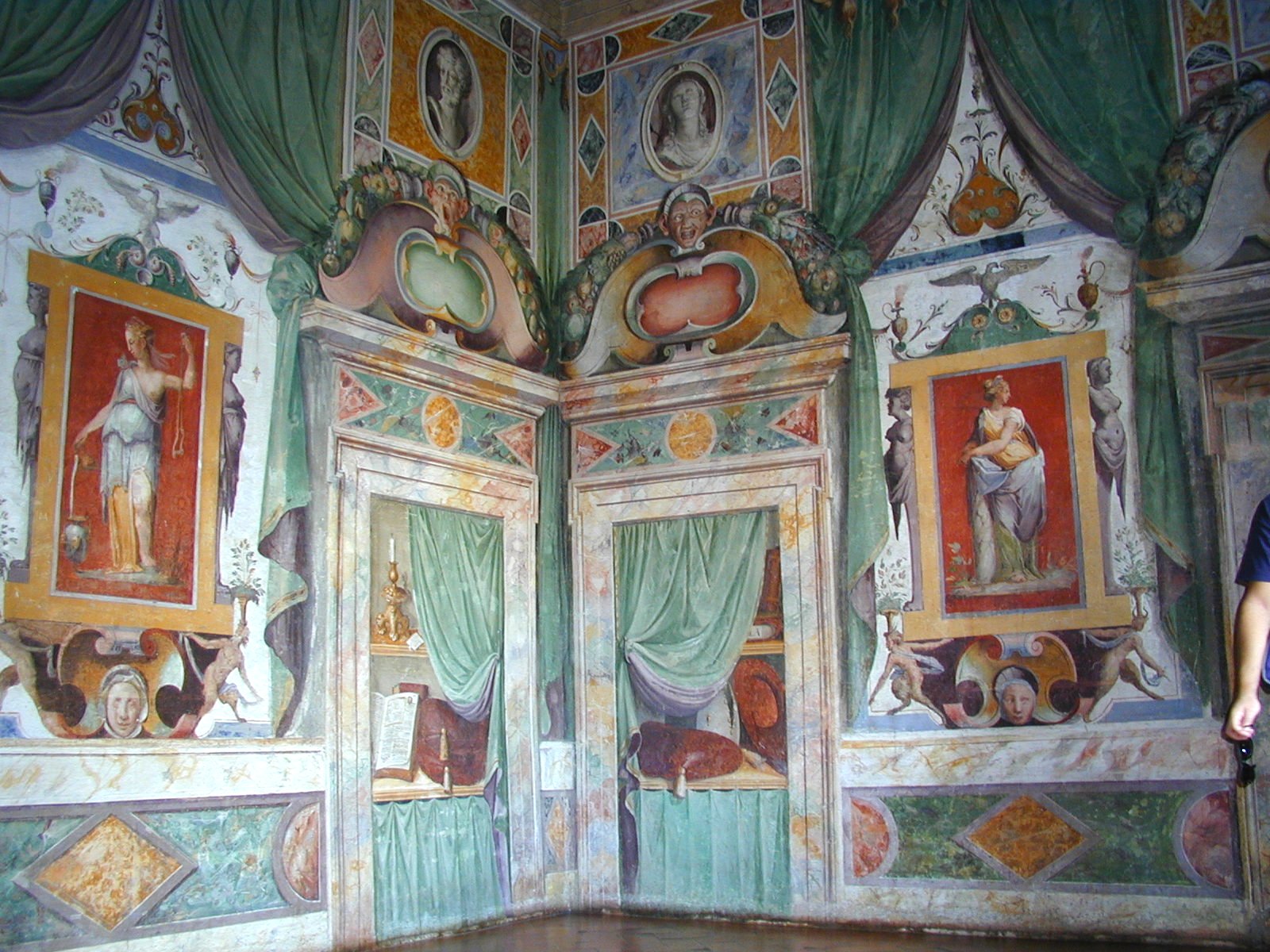The Renaissance gardens οf the Villa d’Este in Rome, Italy
Tivoli can be found just 30 kilometres from Rome. It is located high in the cool hills, with a panoramic view of the area, a cascading waterfall that has mesmerised countless artists, and with the circular temple of the goddess Vesta crowning its peak. This image is not imagined but real, and has captured our collective memory as one of the truly representational sites of the typical Roman countryside.
The terraced gardens in the Villa d'Este, Tivoli, Rome.
Within this idyllic place, a second was created, not by nature, but by the hand of man. It is the Villa d’ Este, whose gardens are considered the most beautiful in Europe. A hymn to Beauty, as Beauty was intended during the Renaissance. It is a miracle of mankind who transformed a wild, unruly slope into a place of unparalleled magic. Wherever you look, fountains, waterfalls and frolicking nymphs of varied size and form delight the eye in their studied symmetry, and the gentle murmur of water changes at each tap and spout for sheer acoustic pleasure. The green foliage combined with the towering cypress trees and the ornate staircases that tumble about at the different levels are also a hymn to Geometry. This was the Renaissance, which changed the relationship of man with nature, and Cardinal Hipollyte d’Este, who lived here, was both its patron and prince.
The Oval Fountain in the gardens of the Villa d'Este in Tivoli, Rome.
Guests, then, would arrive at the villa from an entrance at the foot of the mountain, unlike today, where one enters from a point the ancient roman road passed on its way towards Tivoli. In any event, the villa was conceived with the intent that it would be viewed from below. In those days, guests would come up the central axon either on foot, in small carriages or even in special cabins carried by servants, called portantine, and each step would reveal something different about the gardens of miracles, jardins des merveilles as they were called, and whose designs and plans were making the rounds of all of Europe. Under the shade of the trees, they would watch the waters dance, creating a myriad of shapes, sometimes resembling a fan, at other times lilies or even umbrellas, while the rays of the sun would pass through the millions of droplets creating minute rainbows.
The Neptune fountain and Water Organ in the gardens of the Villa d'Este, Tivoli, Rome.
Each fountain was an excuse to stop and rest and find pleasure on the way up to the palace, which one could reach by climbing diagonal ramps or semi-circular staircases and in whose railings ran small streams of water which were fed by lilliputian waterfalls. Finally, the guests reached the large landing at the top of the stairs and, according to the plans that formed the creation of this wondrous villa, the eyes would finally leave the magical gardens and turn their gaze onto the open panorama of the Roman countryside and, when the atmosphere was crystal clear, even the cupola of St. Peter’s in Rome could be seen.
The egale, the symbol of the d'Este , is prominentaly shown among the spouts in the Hundred Fountains in the gardens of the Villa d'Este, Rome.
I come often to the Villa d’Este, and I prefer to walk in the gardens early in the morning, when other visitors still haven’t arrived. Making this climb, I am nothing more, nor less, than another pair of eyes enchanted by the Renaissance. The rest of the world doesn’t exist.
Upon entering the Villa, the significance of water is again observed. Beautiful wall-mounted fountains, framed with mosaics and shells, adorn the reception halls, which are also decorated with wall-drawings depicting heroes, gods, and scenes from mythology, hunts, gardens and landscapes – all framed by motifs common to the period and placed theatrically throughout.
Interiors of the Villa d'Este, Tivoli, Rome.
It was in this refined environment that the Cardinal and his 250 courtiers lived. He was surrounded by the great poets, musicians and scholars of the period. The Great Patron of his time, who didn’t hesitate to spend the inconceivable sum of one million scudos in the creation of this villa, whose fame has transcended time and whose architecture and scope formed the prototype from which the subsequent royal gardens of all of Europe would be inspired.
My long sojourn in Rome is described in the book: Feeling Rome
Renaissance frescoes inside the Villa d'Este, Tivoli, Rome.






